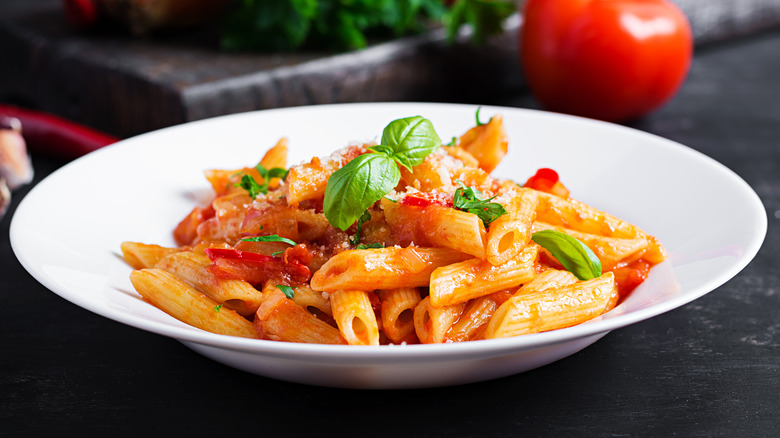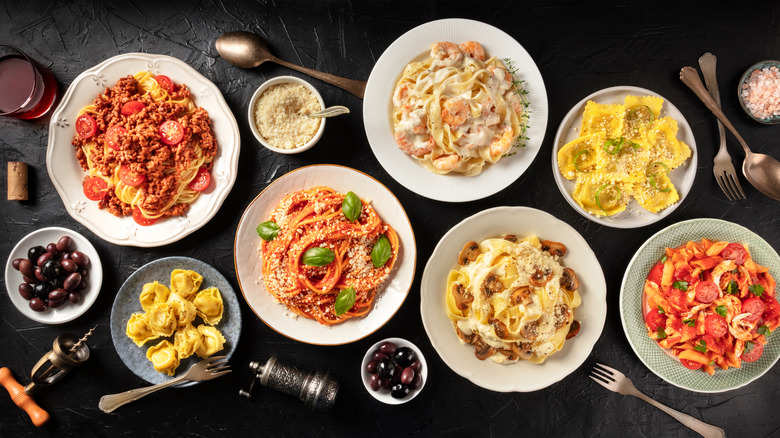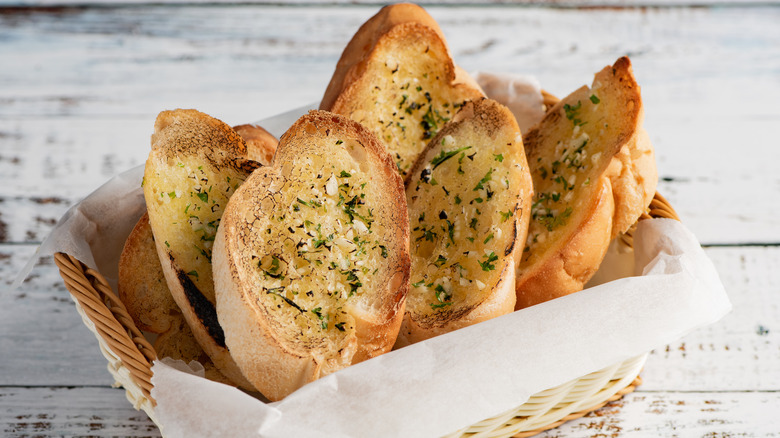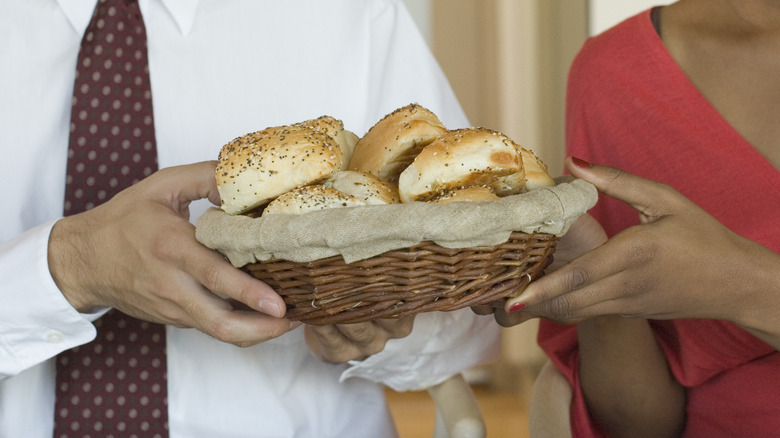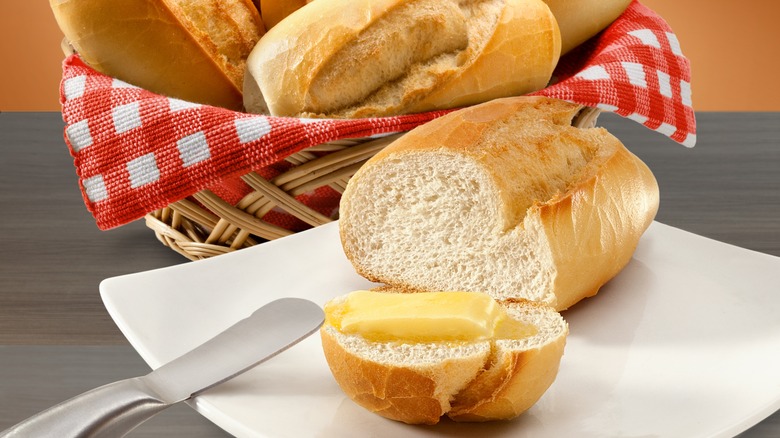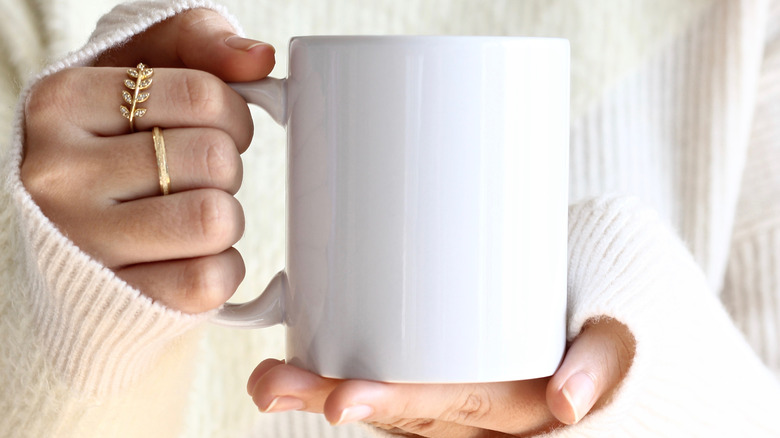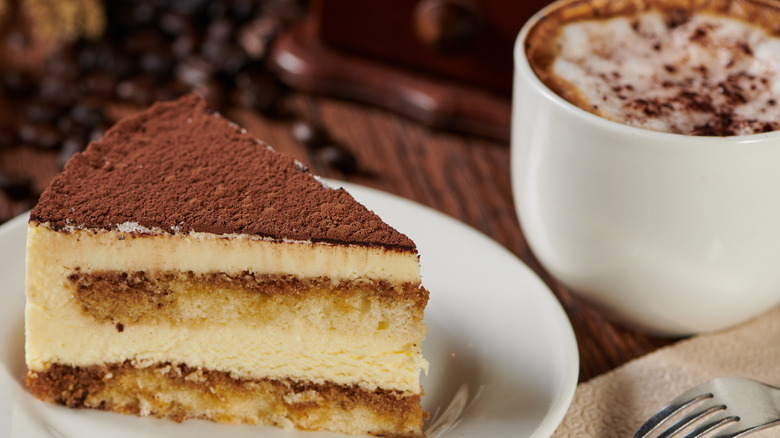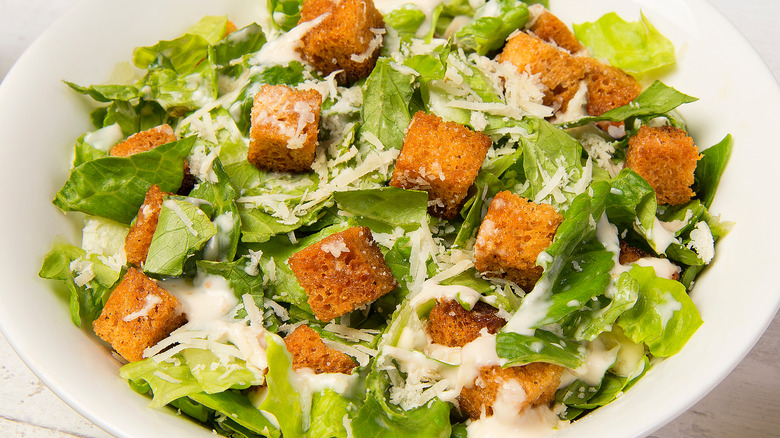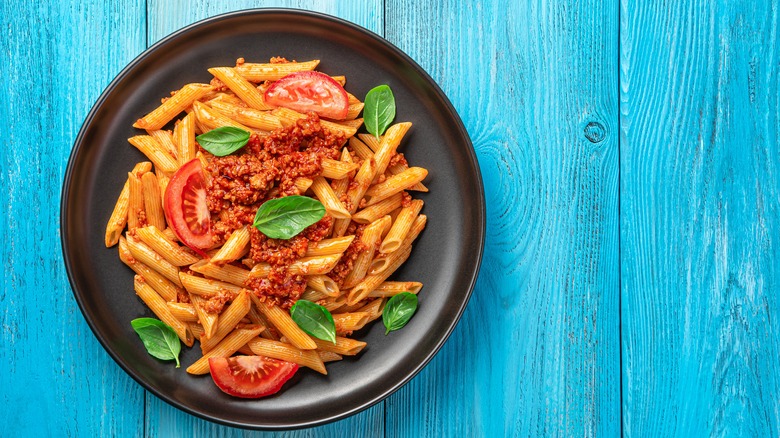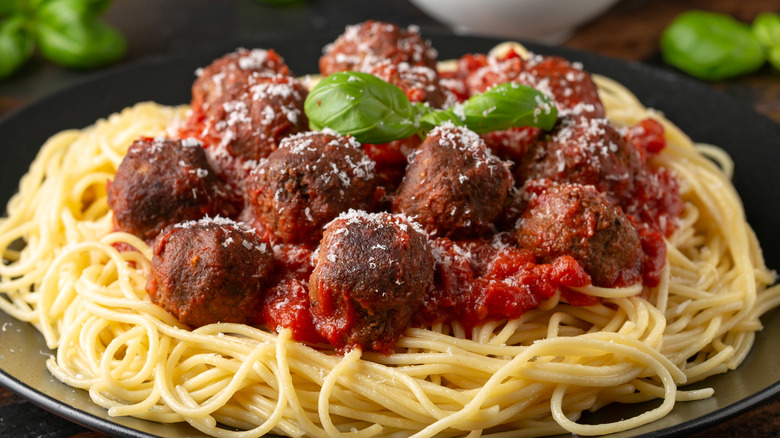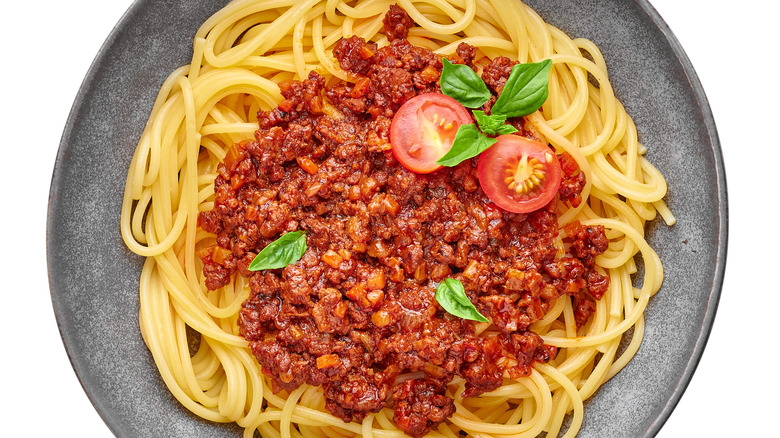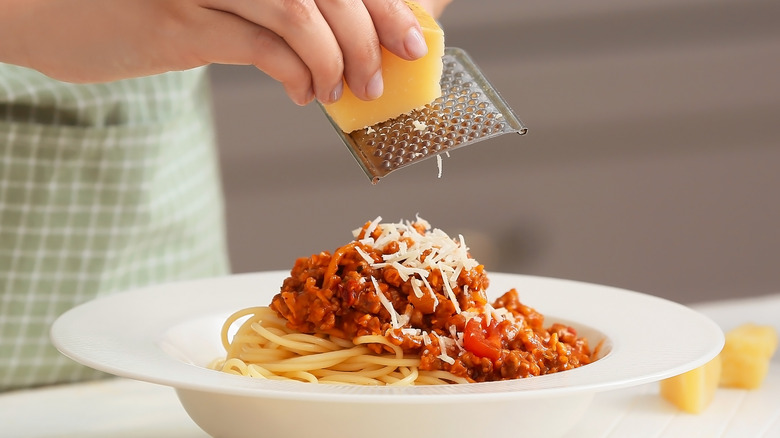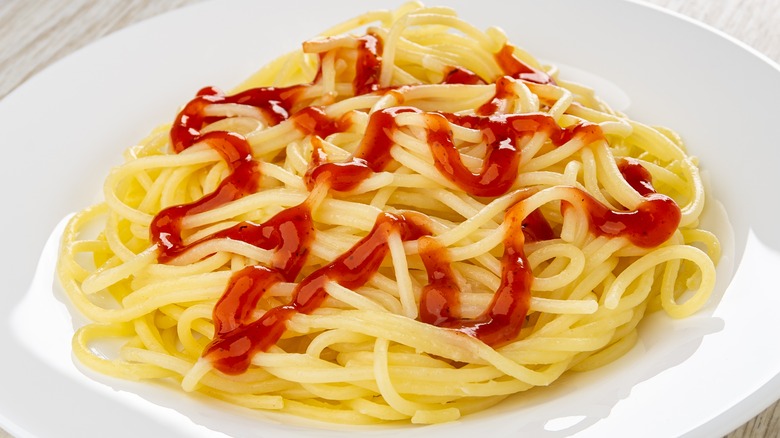Mistakes Everyone Makes At Italian Restaurants
Whether you just don't have time to prepare something elaborate for dinner or are trying to create a more reasonable food budget, pasta is an easy rotation item for your household menu, but the truth about real Italian food may run a bit deeper than your favorite pot of sauce. The good news is that if you're cooking at home, it doesn't really matter what anyone says about authentic cuisine, and if you do care, there are plenty of Italian restaurant secrets you can try at home. But, when you head to Italy, or just a truly authentic Italian restaurant elsewhere, there are some major mistakes you'll want to avoid — and plenty of them go against everything you thought you already knew about Italian food.
While there are dozens of unique Italian foods you need to try before you die, it's important to know the right time to order them, the right way to eat them, and the right foods and beverages to pair them with. Otherwise, it's possible you'll spoil the dish and it's certain you'll anger some Italians, including the chef and server. To refrain from making any of these unforgivable errors, make a careful study of this list of some of the biggest mistakes everyone makes at Italian restaurants.
Ordering just one dish
Don't head to an Italian restaurant if you're short on time or cash — at least not if you want to have a proper Italian meal, like an actual Italian. No Italian dinner is a one-course affair, so kiss goodbye to your cheap dates and quick bites; it's time to settle in for a few hours of considerable conversation and countless dishes. Okay, maybe not countless, but at least several and, if you want to do it the authentic Italian way, Cucina Toscana says you should be prepared for nine. Some of those courses are liquid, but you should still plan to pack away more than a single plate of deliciousness.
Cucina Toscana reports that a true Italian starts with one drink and ends with two drinks, with a whopping six food courses in between. While this certainly may be more than you're used to, it's not quite as gluttonous as it sounds. Unlike many other national cuisines, Italian meals rarely combine foods in a single course, so the salad will come as its own course, fruit and cheese (not to be considered the dessert) will come as a separate course, and so on. The only exception here is that sides, typically vegetables, will generally accompany the second food plate, which is usually the meat or seafood course.
Asking for garlic bread
If your general knowledge of Italian cuisine consists primarily of pasta, chicken parm, and maybe a couple of soups and desserts, it's safe to assume you've encountered garlic bread at plenty a home-cooked "Italian" meal. After all, what's not to love about warm bread slathered in butter and dressed in garlic and herbs? We agree there's nothing to dislike here, but there's some pretty bad news for anyone serving this alongside pasta on an Italian night at home: It's not Italian.
Garlic may be a hallmark of Italian cuisine, and there's certainly bread served at many Italian meals, but restaurants in Italy are beyond unlikely to serve garlic bread with any meal. This is because, for the most part, it doesn't exist there. Sure, bruschetta is a common antipasto in Italy, and the small pieces of bread may be topped with garlic, among other ingredients, but this is the closest you'll get to American garlic bread in Italy. As The Washington Post reports, garlic bread is an American invention made with Italian ingredients, not an Italian food you should expect to find anywhere in Italy. But hey, if you're dining out at an Italian restaurant in the U.S., you still may find it on the menu, and it's perfectly acceptable to chow down on a few slices.
Eating bread at the wrong time
While we're on the subject of bread, let's talk bread-iquette. Your parents may have chided you not to fill up on the bread rolls served at restaurants before eating your meal, and they were right, but appetite isn't the real reason you shouldn't be downing the dough immediately at an Italian restaurant. In fact, there are several rules — or at least customs — surrounding bread at an Italian meal, so it's best to bone up before heading out if you want to avoid bread blunders.
According to Elizabeth Minchilli, the number one rule of bread in Italy is not to eat it before your meal arrives, but rather to eat it with other food. In Italy, bread is not an appetizer, but an accompaniment for the courses to come, even though it is often served shortly after you are seated. Eat it with soup, with your meat or fish, or even with your vegetables, but do not eat it alone. Oh, and never eat it with your pasta course because doubling down on starches is another Italian no-no. The slight exception to this last tidbit is that you can use bread to sop up leftover sauce after you've finished your pasta.
Putting butter on bread
We told you there were a lot of bread rules, and there's one more that we want to draw your attention to before we move on. You may be accustomed to reaching for the butter dish as soon as your bread is served, or even asking for olive oil and balsamic vinegar for dipping, but Italian food tour company MP Tours reports that both of these are foreign concepts to Italians. You may have figured this out already from the rule above, regarding not eating your bread as its own course, but there's no reason to further season or flavor your bread because it's meant to be eaten with complementary foods, not as a filling snack (hey, your parents were nearly right, after all!).
Tuscan Traveler says there is one exception to this rule, and that's when having toast with breakfast. Otherwise, they say, stick to using it as a sponge for sauces and soups. Aside from violating Italian customs and etiquette, you may actually cause an uncomfortable situation by asking for butter at a real Italian restaurant, since they are likely to be stocked with big blocks of cooking butter but no presentable serving butters. Of course, if you tend toward a more touristic restaurant, your bread may even be served with butter or oil today, but using it will certainly reveal your tourist identity.
Drinking coffee during a meal
We promised to move away from bread, so we'll now turn our attention to coffee. While drinking coffee during a meal is not exactly commonplace, it's a bit more common in the U.S. than it is in Italy, and that's simply because it's absolutely never done there. Moreover, as Italy Magazine explains, coffee isn't even served with dessert in Italy, but will only come after the full meal has been enjoyed, including that tiramisu or cannoli. As we've already learned from the course-by-course procession of Italian meals noted above, Italian meals are lengthy and leisurely, so it's actually considered rude for a restaurant to serve coffee with dessert, suggesting that they're trying to rush you from the table.
This rule isn't just about propriety in Italy, though. DailyO reports that Italians hold the firm belief that espresso aids in digestion, making it the perfect after-dinner aid for settling in for a peaceful slumber. Despite the caffeine content, Italians are not concerned about being kept up all night by their coffee, but appreciate its alleged digestive benefits, and nearly always follow their dessert with this beverage.
Drinking a cappuccino with dessert
If you're going to order like a true Italian when choosing your after-dessert coffee, you should avoid an Americano and embrace an unadulterated espresso beverage. But even that's not the most important rule in selection here, because there's one espresso beverage that's completely off limits, and that's the cappuccino. It may be common to order a cappuccino with, or after, dessert in the U.S., but The Cut reports that cappuccino is simply never ordered after noon in Italy. The reason appears to come back to the same belief we learned about above (espresso helps aid digestion after a meal), as many Italians appear to believe that cappuccino conversely inhibits digestion. The Cut reports that this is untrue, but that's not the end of the story.
Cappuccino is a dairy-forward espresso drink and, while only the lactose-intolerant are likely to suffer digestive difficulties with it, it remains a heavy beverage to consume, and that can make anyone feel uncomfortable — especially after a meal as long and large as an Italian dinner. With this in mind, it makes good sense that Italians only drink cappuccino in the morning, even if their long-held reasoning isn't necessarily the most scientifically accurate. Whatever the reason, it isn't done, so don't make the mistake of turning heads by ordering a cappuccino after dessert, or any time after noon, really.
Having a Caesar salad
Remember what we learned about the true origins of garlic bread above? Unfortunately, you're probably wrong about the origin of the Caesar salad, too. Though it's just as commonly served at Italian restaurants in America, Caesar salads are hard to come by in Italy and even in authentic Italian restaurants in the U.S., because they're just not part of the Italian culinary tradition.
As PBS reports, the Caesar salad is another untraditional dish that became popular in Italian-American restaurants because of its very Italian ingredients that were readily available to immigrants in the mid-20th century. Unlike garlic bread, though, Leite's Culinaria reports that this one wasn't even invented by the Italian transplants. Instead, Caesar dressing was a dip invented in Tijuana in 1924, and ultimately morphed into the salad plate you know and love today. At its core, there's absolutely nothing truly Italian about the Caesar salad, so don't try ordering one as a sensible lunch in Italy or as a dinner side at any truly Italian restaurant elsewhere, either.
Ordering a side of pasta
Speaking of sides that you can't order in Italy, this one may come as the biggest shock so far: You shouldn't order a side of pasta with any meal. Despite how common pasta sides are at popular Italian restaurants in the U.S., My Little Italy reports that pasta is never, ever a side dish in Italy, and ordering it as such would be a grave insult.
Recalling the rigid regimen of Italian dinner courses noted above, the pasta course is the first dish following a plate of appetizers. As such, it's a full course on its own, and never comes alongside the main course (the meat or seafood selection). Instead, a plate of pasta in Italy comes fully dressed with its proper sauce and should be consumed in its proper order, appreciated on its own. To order it served simultaneously with your main course is a sin most Italians could not forgive, and it would certainly confuse your server, so don't insult the pasta, the chef, or the restaurant by doing it. If you're too full for every course, but don't want to miss the chance for top-notch pasta while at an amazing Italian restaurant, just order the pasta course and skip your second. It's not the best form, but it's better than pretending pasta is a side.
Asking for spaghetti and meatballs
And now to shake your pasta traditions to their very core: Spaghetti and meatballs is not a dish that exists in Italy. Among the biggest mistakes everyone makes when cooking spaghetti at home, we're guessing you didn't realize that adding meatballs to the dish was one of them. But if you've been paying attention to the growing list of Italian food etiquette and customs on this list thus far, you may have been able to piece this one together on your own. If not, here's what you missed.
As Let It Wine confirms, you will absolutely find spaghetti in all corners of Italy, and meatballs are not hard to find either, but you'll never find them served together on a single plate. Adding meatballs to spaghetti is yet another purely American innovation, and the Italians have not embraced this one any more than garlic bread or Caesar salads. Recall what we've just learned above about pasta never being a side dish. As The Sun elaborates, this means spaghetti does not exist to accompany meatballs in a single course, but is served individually as a first plate. Meatballs, a meat by definition and even name, may certainly be served as a viable second plate after spaghetti, but they are not consumed together and there's nothing traditionally inseparable about the two in Italy as in America.
Ordering spaghetti Bolognese
As with most rules, especially in Italy, there are usually exceptions. If you're already considering yourself a genius by identifying spaghetti Bolognese as an exception to the rule of keeping pasta and meat separate, you're congratulating yourself too quickly. You were close, but still wrong.
As Insider reports, the mayor of Bologna himself has confirmed that spaghetti Bolognese is not only not an exception to this rule, but doesn't even exist. He calls it "fake news," and he is not lying. His qualms with the mythical dish are relatively technical, though, so you can release your gasp and breathe a bit easier now. In reality, there certainly is a true Italian meat sauce that tops pasta and it did originate in Bologna, but it's known across Italy as ragù alla Bolognese because it describes the sauce, not the pasta. More importantly, it is never served over spaghetti, because thing, round spaghetti noodles are incapable of properly holding and supporting the heavy meat sauce. Instead, expect to find ragù alla Bolognese served on thicker noodles like tagliatelle, which were possibly also invented in Bologna (via The Pasta Project). If you are craving a hearty meat sauce on your next visit to a real Italian restaurant, you may find it, but you'll have to pay careful attention to the menu and stop looking for "spaghetti Bolognese," because it certainly won't be there.
Adding grated parmesan to everything
If you're favorite moment at the Italian restaurant is when the server sprinkles parmesan all over your plate until you yell "when!" then you may not love this rule of real Italian dining. But you're not completely out of luck either. Unfortunately, as The Independent reports, giddily grating parmesan on every pasta as liberally as some may shake salt over every plate is not okay. In particular, parmesan definitely does not top any seafood pastas in Italy and, as a general rule, shouldn't be grated onto any food hot enough to melt it. Refining your parmesan etiquette further, keep in mind that it shouldn't complement dishes containing truffle because it ruins the exquisite flavor balance for which you're likely paying so handsomely.
If you absolutely can't go without your grated parmesan fix while dining in true Italian style, the most important faux pas to avoid appears to be mixing cheese and seafood. As Meal and a Spiel explains, there are two primary reasons Italians are especially averse to this particular pairing. First, traditional Italian cuisine generally adheres to pairing only ingredients from the same region, and cheese and seafood were not typically found in the same topographies before modern transportation and trade. Therefore, traditional recipes would not include both due to availability. Second, Italian seafood lovers deeply adore the taste of the sea and prefer that nothing as strong as a cheese be introduced to spoil its pure flavor. If you must grate parmesan on hot pasta, at least avoid ones with seafood.
Using ketchup on pasta (or any other Italian dish)
We're not completely sure who needs to hear this, but we know you're out there somewhere, so here goes nothing: Do not ask your Italian server to dress your spaghetti, or any other pasta, in ketchup. According to Just One Cookbook, ketchup spaghetti is a nostalgic comfort food in parts of Japan, and Swedish YouTuber Kent Löfgren says all Swedes top their spaghetti with ketchup, but it's entirely unheard of in Italy. The same goes for just about any Italian restaurant in America. In fact, according to Fine Dining Lovers, Italians say it's the least forgivable crime against Italian food.
Still, Why Italians reports that this has nothing to do with hatred toward ketchup in Italy, citing ketchup as the second most used condiment in the country after mayonnaise. Italians love dipping French fries and other fast-food treats in ketchup, but there's nothing on an Italian menu that would ever warrant the inclusion of this tomato-based condiment, so most Italian cuisine restaurants are unlikely to even stock it — and rightfully so.
